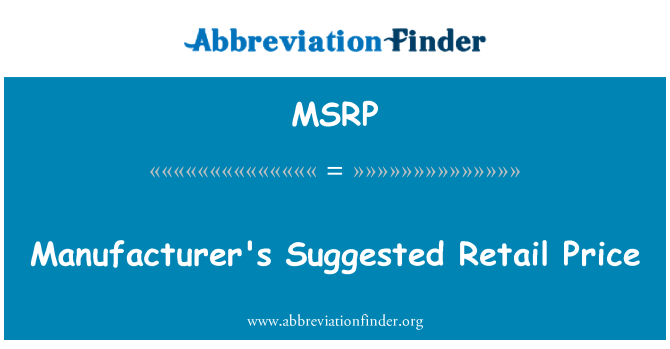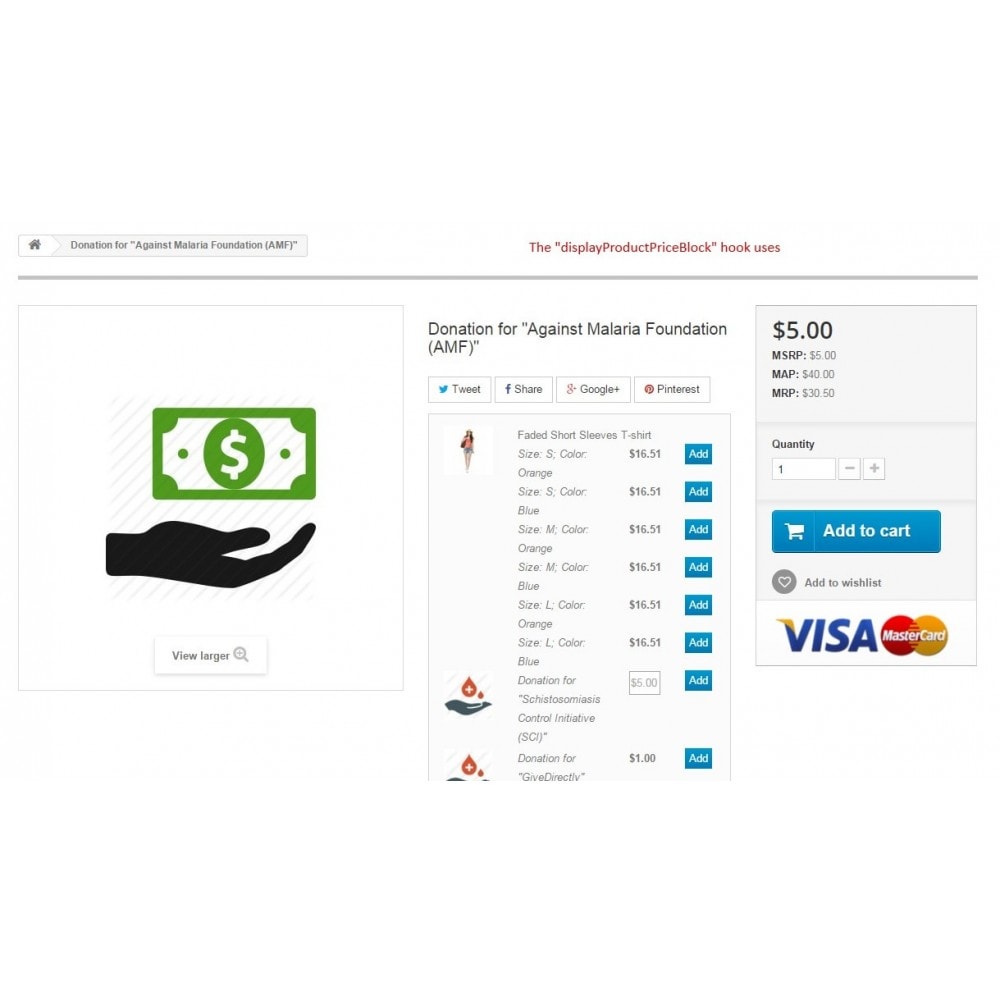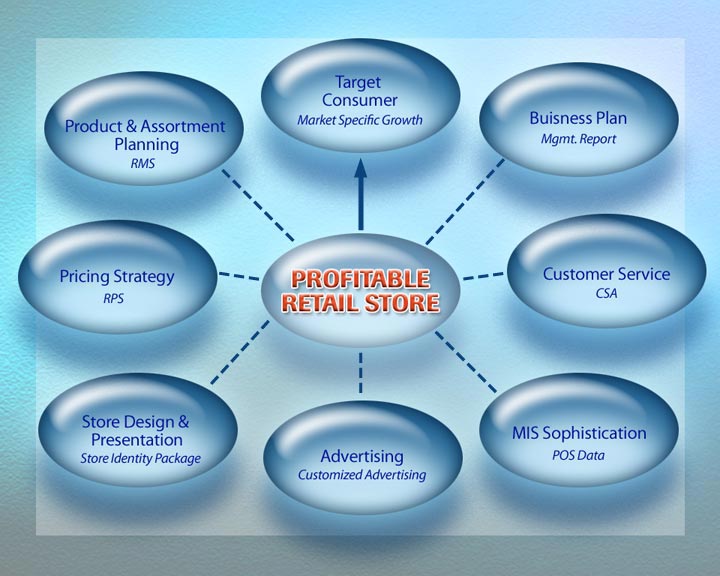Although such standardized prices ensure that consumers do not have to overpay for the goods purchased, several retailers actually sell products for lower prices than the MSRP. This is typically done to move inventory from the shelves during periods of slow sales or as part of competitive pricing strategies aimed at outdoing the prices offered by competing retailers. Since retailers usually purchase products from manufacturers at wholesale prices that are well below the MSRP, it is possible to offer huge discounts on the listed prices and still turn a profit.
On the other hand, retailers may choose to sell certain products for prices higher than the MSRP. This is usually done when the products are in high demand and /or in low supply and the retailers are convinced that they will sell quickly irrespective of the higher prices. In the United States, MSRP plays a significant role in the automotive sector. Prices of vehicles often varied from dealer to dealer as a result of the inconsistent nature of markups. Potential customers can use these sticker prices as bases for further negotiating the final selling prices of the vehicles.
The sticker price is what the dealership lists as the price you see the car for sale for. This price includes additional charges such as transportation , preparations costs and dealer or after market installed options. These additional charges are not part of the initial MSRP but are part of the final cost of the vehicle. Since the MSRP is a suggested price, the dealer is free to charge whatever he wants for the vehicle.
Because a lot of customers say they won't pay above sticker price, manufacturers and dealers sometimes raise the sticker price artificially and then offer supposed discounts. Some cars may become so popular that dealers can charge, and sell, for far more than the MSRP. The dealer may add on something called a fair market value adjustment when a particular model is in short supply because of increased demand. Dealers add an amount they feel is appropriate to increase their profit. While you may be able to negotiate away the fair market value adjustment, many times you can't for cars that are in short supply. This is because the dealer knows that even if you don't buy the car--somebody else will pay a higher price.
The principle of manufacturer-suggested retail pricing conflicts with the basic foundation of the competition theory. This is because large retailers typically buy in bulk directly from the manufacturer at much lower wholesale prices. On the other hand, smaller retail stores generally source their merchandise from distributors in relatively lower quantities and higher wholesale prices.
Secondly, it is possible to manipulate the MSRP to unreasonably higher figures. Manufacturers often set an unreasonably high list price on their products, only for retailers to offer them at highly discounted prices. Such manipulation makes the offer prices seem extremely value-for-money to unsuspecting consumers. The Manufacturer's Suggested Retail Price , also known simply as the list price, is the price at which a manufacturer recommends that a particular product be sold in retail outlets.
The MSRP is also variously known as the recommended retail price , the suggested retail price or the sticker price. The MSRP of a particular product is typically set in such a way as to reflect all the manufacturing, advertising and selling costs associated with that product. MSRP is an acronym that stands for Manufacturers Suggested Retail Price. MSRP is simply the price the car's manufacturer suggests the car dealer should charge for the vehicle. New car dealers, however, can price and sell the cars for any amount they want, and the transaction price of most new cars is well below MSRP.
This is usually after some smart negotiation from the consumer, but many dealers will offer cars below MSRP prior to any haggling with the shopper. Many hot new models are sold at MSRP, because demand is high for those vehicles and dealers know some buyers will willingly pay extra to get their hands on one. But usually this demand cools off after a few months and deals can be negotiated on the same model a few months later. Although it's extremely unusual, occasionally there are special limited-edition versions of a vehicle that dealers will try to sell for an amount higher than the MSRP.
This is because the manufacturer has said it will build only a small number of the hot new model despite the fact that it's in high demand. This is fairly common in the auto industry and creates even more demand in the market for certain models. Recently the2018 Dodge Demonmuscle car and theFord GTsupercar were famously sold for over MSRP. Shoppers should also remember that used cars orcertified used carsdo not have an MSRP.
The meaning of MRSP is the manufacturer's suggested retail price, in other words, the price that producers and brands recommend to merchants and stores. It is a price that takes into account the process and costs of production. The final selling price may change as it is influenced by other factors such as logistics or taxes. Under earlier US state Fair Trade statutes, the manufacturer was able to impose a fixed price for items.
The fixed prices could offer some price protection to small merchants in competition against larger retail organizations. Many manufacturers have adopted MSRP, a price at which the manufacturer suggests the item be priced by a retailer. The discount stores benefit from exorbitant MSRPs because the discount offered increases the perceived value to customers. While some shops/stores always sell at, or below, the suggested retail price, others do so only when items are on sale or closeout/clearance.
MSRP isn't a set-in-stone figure — hence suggested retail price — and you can often negotiate the selling price to influence your car's out-the-door cost. In turn, dealers aren't obligated to sell a car at this price, either, and depending on demand and availability of the vehicle in question, they can adjust their selling price. When dealerships mark up a hot new car, it can sometimes inflate the cost above MSRP. On the other hand, the manufacturer's suggested retail price is different from the invoice price, which a dealer pays to the manufacturer. Previously, car dealers could impose arbitrary markups, often with costs artificially inflated to over-compensate total production costs. Currently, the MSRP is used by customers as the negotiation starting point before settling at a fair price.
The manufacturer's suggested retail price is also sometimes referred to as the recommended retail price , sticker price, list price, or suggested retail price of products. This was developed to help standardize the price of goods throughout the various locations of a company's stores. The retail price is the price that the customers pay for the final product that is sold. There is a difference between a retail price, manufacturer price, and distributor price.
These are all different prices in the supply chain between seller and seller. In a free market system, the final retailer will have the option to set their price based on their demand and supply. The process of setting the recommended retail price is a multi-step process that involves the interests of stakeholders and current market forces.
It can include the cost of manufacturing the product, distribution costs, competitor prices, and consumer sentiment. With all this considered, the suggested retail price is formulated to determine what will bring you the most profit. Few variables are more important to a successful business than pricing. If the price is too low, you miss out on profits and potentially create more demand than production can efficiently meet. Choosing the optimal price point is challenging, but using the manufacturer's suggested retail price gives you a basis for this pricing decision. The sticker price is what you would see on a sticker displayed on a car's window.
The number on these stickers may or may not include discounts or other fees associated with the purchase. And since sticker prices are set by dealerships, they may vary from one location to another. Like the MSRP, this number is usually higher than the dealer cost, which means that there is room to negotiate, even if the number is far below the MSRP. Dealers can still profit from low sticker prices because manufacturers tend to offer them a fair compensation in return, like the Dealer Holdback or Dealer Cash Incentives. MSRP is the price manufacturers suggest that dealers charge for the vehicle you are looking to buy.
Factors that influence this price are the cost of manufacturing, the make and model, the specific trim options and where the car is being sold. Vehicles that are more popular in one region of the country will have a higher MRSP than those sold elsewhere. The MSRP is determined ahead of time by the auto manufacturer and it is only a suggested price, a guideline as to where dealers should base their starting asking price. By law all new cars for sale are required to list the MSRP on the sticker in the window. In fact only the purchaser of a new car is allowed to remove the sticker.
In the vast majority of new car sales, MSRP is not the best price you can get. Dealers expect buyers to negotiate the price lower, so shoppers should haggle and offer less if they want a lower price. Usually the margin between invoice price and MSRP is thousands of dollars, so the dealer has room to negotiate and still make a profit.
Most of the time the transaction price falls between the invoice price and MSRP, however, under certain circumstances many dealers will sell a car for below invoice price. Often it's best to begin negotiations by offering the dealer an amount below invoice price, which is easily accessed online. Any counter offer by the dealer will usually be between the invoice price and the Manufacturers Suggested Retail Price. Determining your recommended retail price or suggested retail price is a careful balancing act.
It should reflect all the interests of the parties involved, the manufacturer, retailer, and customer. But this must also be balanced with how much customers are willing to pay for your products and how attractive it is for retailers to partner with your business. Existing market forces, such as your direct competitors play a significant role on your recommended retail price . It is especially true for new players hoping to get a piece of the market. Often, new businesses lower their profit margins and offer more competitive suggested retail prices to attract new customers. Dealers might be able to increase their profit margins even more by paying less than the invoice price.
They might be able to get a discount on vehicles through dealer rebates or by achieving sales bonuses that manufacturers offer. Harmony is three retail stores that sell jewelry to women and children. The store purchases jewelry from different distributors that again buy their products from manufacturers. The marketing manager is trying to calculate what he should sell the gold necklace for. Brands often set minimum advertised prices at a level that will allow retailers to make a decent profit. However, brands should note that this policy only controls advertised prices.
This means retailers can sell products below the price set out in a MAP policy in store. But they cannot display a lower price in advertisements or online listings. An RRP may also be known as a listing price or as a suggested retail price .
We often don't understand why we pay what we do, nor do we often understand why some places can or do charge more for the same goods. In the retail goods market, there is such a thing as the MSRP, or manufacturer's suggested retail price. The best I can understand, there is a secret smokey room meeting where such numbers are obtained. MSRP prices attempt to combine the cost of production along with design, marketing, administrative costs, distribution, and of course profit. MSRP is the price often initially presented to you, because it includes some amount of profit margin for the dealer. That would be the invoice price, which is the amount a manufacturer charges a dealer.
It often includes charges to cover costs the manufacturer pays, like such as advertising. The dealer may be reluctant to show you the invoice, and even more reluctant to go below invoice on the sale. A dealer may be willing to sell a car below invoice depending on what perks and kickbacks are available to them, but that'd be a lucky strike. Say a retailer buys your product for $10 and wants a $10 gross profit, they would charge $20 for the product in-store. This is also known as keystone pricing, or simply doubling the wholesale cost paid for a product.
If you are a wholesaler, you can recommend a suggested retail price to retailers, but they do not have to use it. A fair purchase price for a new car purchase is when the buyer happily drives a new car home, feeling like he or she got a good deal, and the dealer has made some profit. Of course a lower price is always desired, but it is possible to pay more than you initially expected and still end up with a fair purchase price.
The Manufacturer Suggested Retail Prices is most commonly used in car sales. When car manufacturers send cars to the dealerships, they include an MSRP, which is the price they think the dealer should put on the vehicle. Dealerships can price cars higher than the MSRP, and consumers can try to negotiate a price lower than the MSRP. Federal law requires that dealerships display the MSRP on a vehicle for sale.
The MSRP is the price of the base model for the car, meaning it is the price without any optional features and add-ons, which could drastically increase the price of a car. Retail products other than cars also have MSRPs, though the retailer usually doesn't have to display them. When manufacturers suggest a retail price , they make a recommendation to the retail store to what price a product should be sold for. It is, however, frequently used by items that have high prices like cars and electrical appliances.
The MSRP will keep the costs consistent across the different retail stores. In other words, a manufacturer should thoughtfully contemplate on how the entire chain secures a market share. The best possible way is to sort of create brand awareness via advertising.
Be it Facebook or Google ads; each marketing channel needs a hands-on budget. The manufacturer will, therefore, have to spread these costs to the suggested retail price. On the surface of it, a manufacturer's suggested retail price is largely set to optimize a fair field for all retailers. Conversely, an MSRP takes into account all the production costs that a manufacturer incurs.
The manufacturer's suggested retail price is the price that a product's manufacturer recommends it be sold for at point of sale. Every retail product can have an MSRP, though they are frequently used with automobiles. Other higher-priced goods, such as appliances and electronics, also have an MSRP as well. New car sticker price is usually what is commonly referred to as MSRP, or Manufacturer's Suggested Retail Price.

























